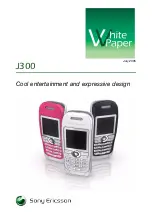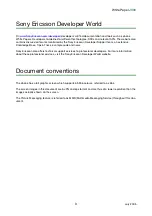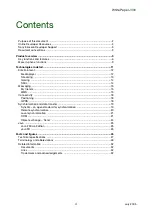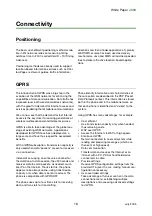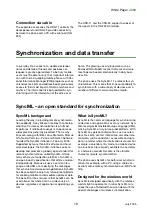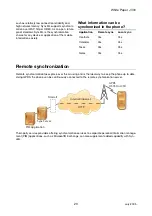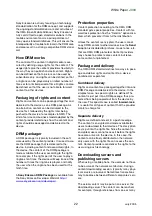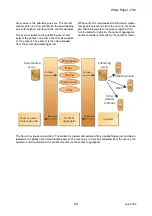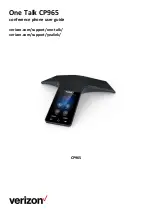
White Paper
J300
10
July 2005
the structure of the content, which part is a para-
graph, which part is a heading, and so on. It does
not specify how it shall be presented. Browsers use
a default presentation for documents without style
sheets. By adding a style sheet to the document
the developer can control the presentation of the
document, the colours, fonts, and layout.
On the Web, the de facto standard style sheet lan-
guage is Cascading Style Sheets (CSS), specified
by the W3C and implemented in IE, Netscape, and
Opera. For mobile phones, the OMA has identified
a subset of CSS and extended it with OMA specific
style rules. The CSS subset and the OMA exten-
sions are called Wireless CSS (WCSS).
The WAP browser supports WCSS 1.1.
My friends (Wireless Village)
To ensure inter operability of mobile instant mes-
saging and presence services, Sony Ericsson,
Motorola and Nokia have created the Wireless Vil-
lage Solution, an open standard. The protocol is
bearer-independent and can be implemented in dif-
ferent networks. The Wireless Village Instant Mes-
saging and Presence Service (IMPS) includes three
primary features:
Presence
Presence information of other Wireless Village
users is received and displayed to indicate their
willingness to communicate. The user’s own pres-
ence information is also sent for others to view. If
the user is interested in another person’s presence
status, he or she can search for this person. If the
person is found, the user may subscribe to his/her
presence information. The presence information is
displayed in a contact list.
Instant messaging
Instant messaging means “point-to-point messag-
ing” between Wireless Village users. Messages can
be sent to an entire contact list or to a single user.
Short message histories of the communication are
logged in a file, which can be read off line. This is a
sub-set file of the whole communication and is lim-
ited by memory.
Chatrooms
The user may join a chatroom and chat with the
other participants/members.
With inbox, outbox, save draft and
reply options, there are all the
functions needed for effective
email communication in a power-
ful mobile phone. Using POP3, SMTP or IMAP4
email servers the phone stores messages dynami-
cally, depending on available memory, and updates
the inbox automatically and over the air. Check
email anywhere. Reply to email on the move.
Friends, family and business contacts know that
when they send email, it can be received, read and
acted on immediately. Pictures can be included in
outgoing emails and attachments that are received.
Hyperlinks in emails are supported.
Personalization
With themes, the user can change many settings in
the phone, for example colours and images, mak-
ing it more personal. The phone comes with a
number of preloaded themes and pictures, and
more can be downloaded and exchanged – sports,
movie, seasonal and other themes will be available
on Sony Ericsson or operator sites. Other personal-
izable features are the start-up screen and the
screen saver. Specific pictures and ringtones can
also be set for each separate name in the phone-
book.
Power save
Your screen is turned off completely a few seconds
after you last press a key. Press either of the selec-
tion keys and the screen turns on again. Other dis-
play light options are On, Off and Automatic.

